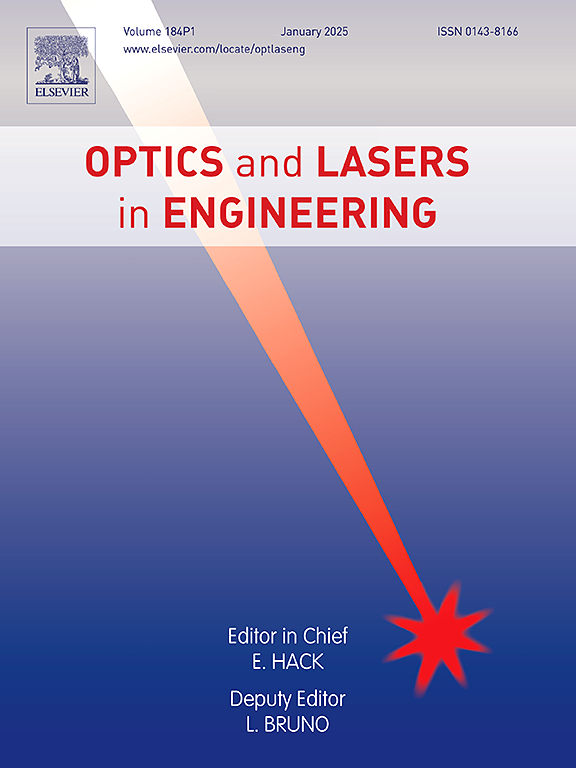Deep learning-based single-shot lateral shearing interferometry
IF 3.5
2区 工程技术
Q2 OPTICS
引用次数: 0
Abstract
Lateral shearing interferometry (LSI) is a powerful measurement method for wavefront sensing and optical testing. However, traditional LSI methods often face challenges in terms of complicated system configurations and vibration sensitivity. In this paper, we propose a novel approach that leverages deep learning to enable single-shot LSI for surface measurement. In our LSI system, the x- and y-directional shearing modules are attached together and a polarization grating and a polarization camera are utilized to obtain a single composite interferogram, which is the summation of the x- and y-directional shearing interferograms. Deep learning is then employed to accurately obtain the x- and y-phases (which are directly related to the surface slope) from the single composite interferogram, significantly reducing the effect of vibration and improving the robustness of the measurements. We trained a deep learning network using training data obtained from a deformable mirror so that the trained network knows how to retrieve the x- and y-phases from a single composite interferogram. We demonstrate the effectiveness of our approach through experimental measurement of different surfaces ranging from simple concave to complex random surfaces, and show that our deep learning-based LSI enables single-shot and even dynamic surface measurement. This work opens new avenues for the application of artificial intelligence in LSI to enable high-speed and dynamic measurement of specular surfaces.
求助全文
约1分钟内获得全文
求助全文
来源期刊

Optics and Lasers in Engineering
工程技术-光学
CiteScore
8.90
自引率
8.70%
发文量
384
审稿时长
42 days
期刊介绍:
Optics and Lasers in Engineering aims at providing an international forum for the interchange of information on the development of optical techniques and laser technology in engineering. Emphasis is placed on contributions targeted at the practical use of methods and devices, the development and enhancement of solutions and new theoretical concepts for experimental methods.
Optics and Lasers in Engineering reflects the main areas in which optical methods are being used and developed for an engineering environment. Manuscripts should offer clear evidence of novelty and significance. Papers focusing on parameter optimization or computational issues are not suitable. Similarly, papers focussed on an application rather than the optical method fall outside the journal''s scope. The scope of the journal is defined to include the following:
-Optical Metrology-
Optical Methods for 3D visualization and virtual engineering-
Optical Techniques for Microsystems-
Imaging, Microscopy and Adaptive Optics-
Computational Imaging-
Laser methods in manufacturing-
Integrated optical and photonic sensors-
Optics and Photonics in Life Science-
Hyperspectral and spectroscopic methods-
Infrared and Terahertz techniques
 求助内容:
求助内容: 应助结果提醒方式:
应助结果提醒方式:


